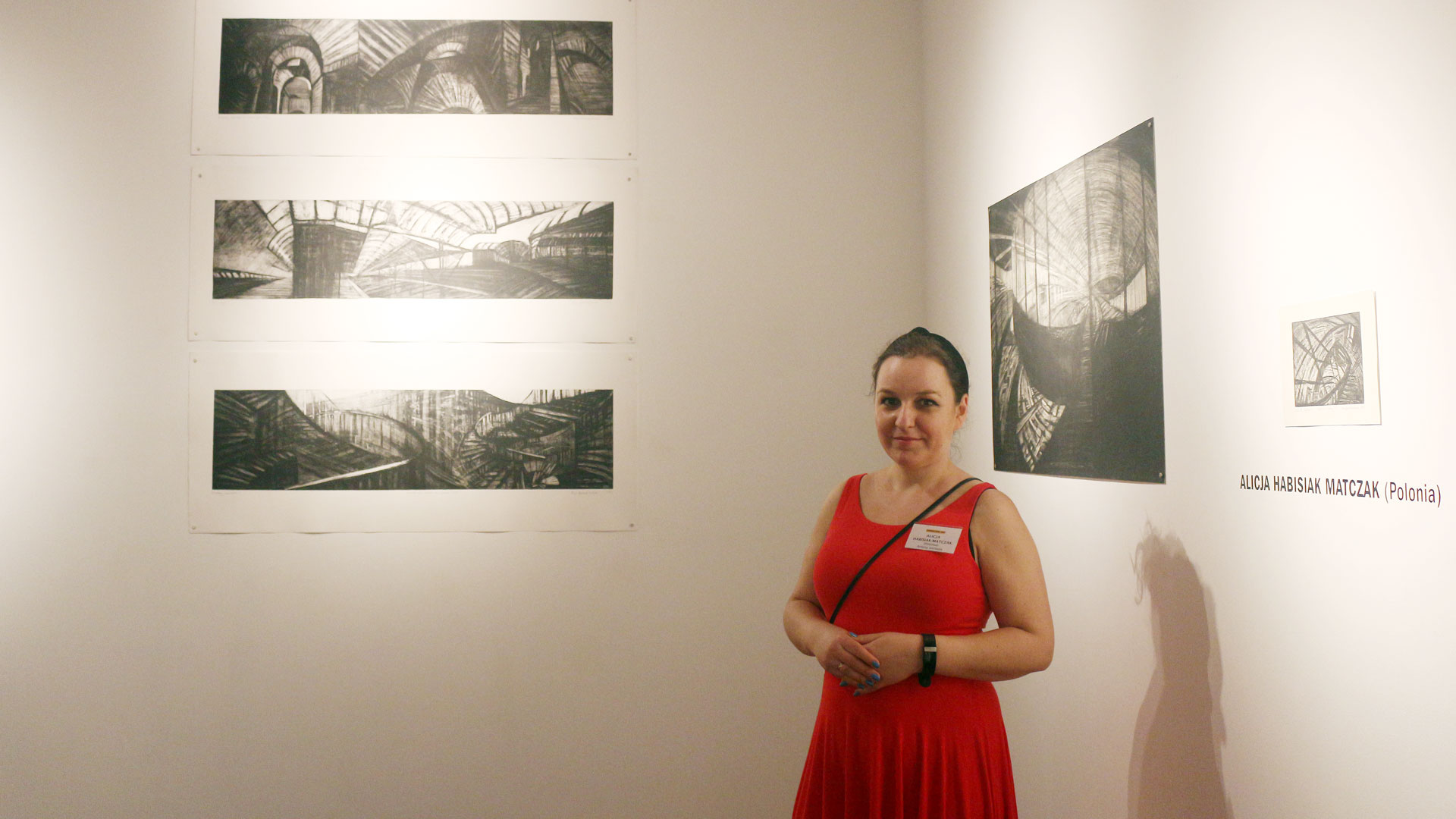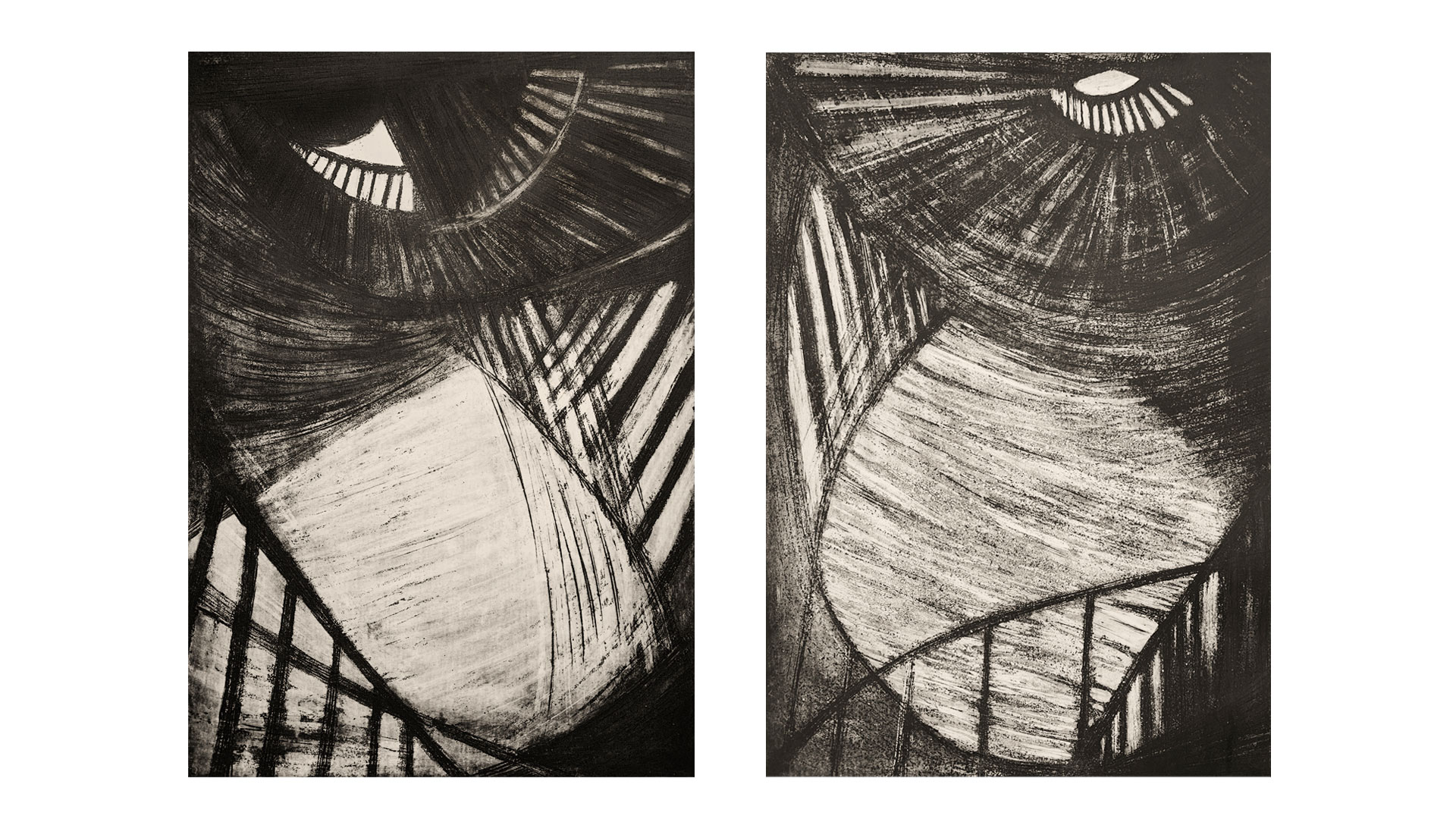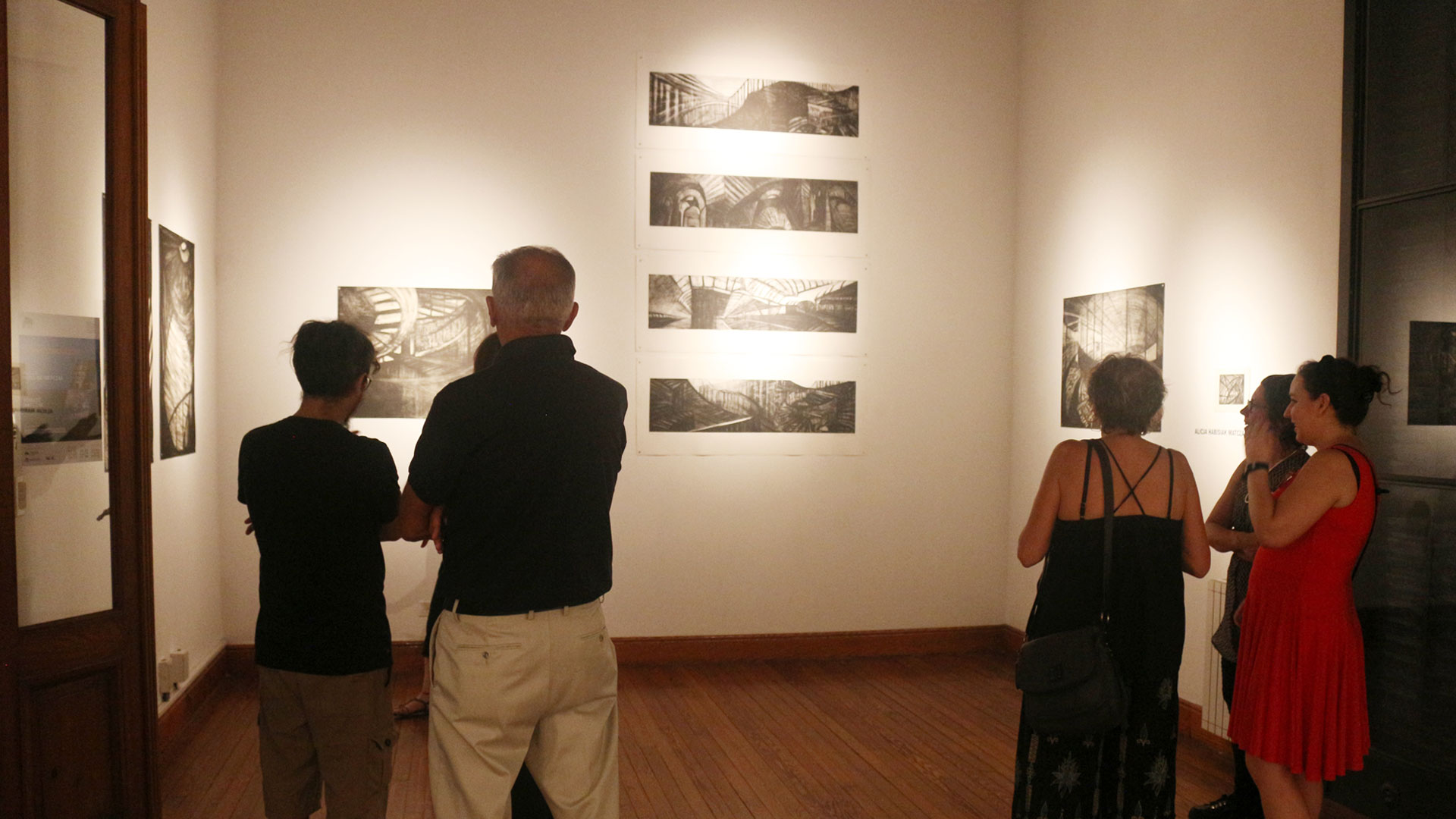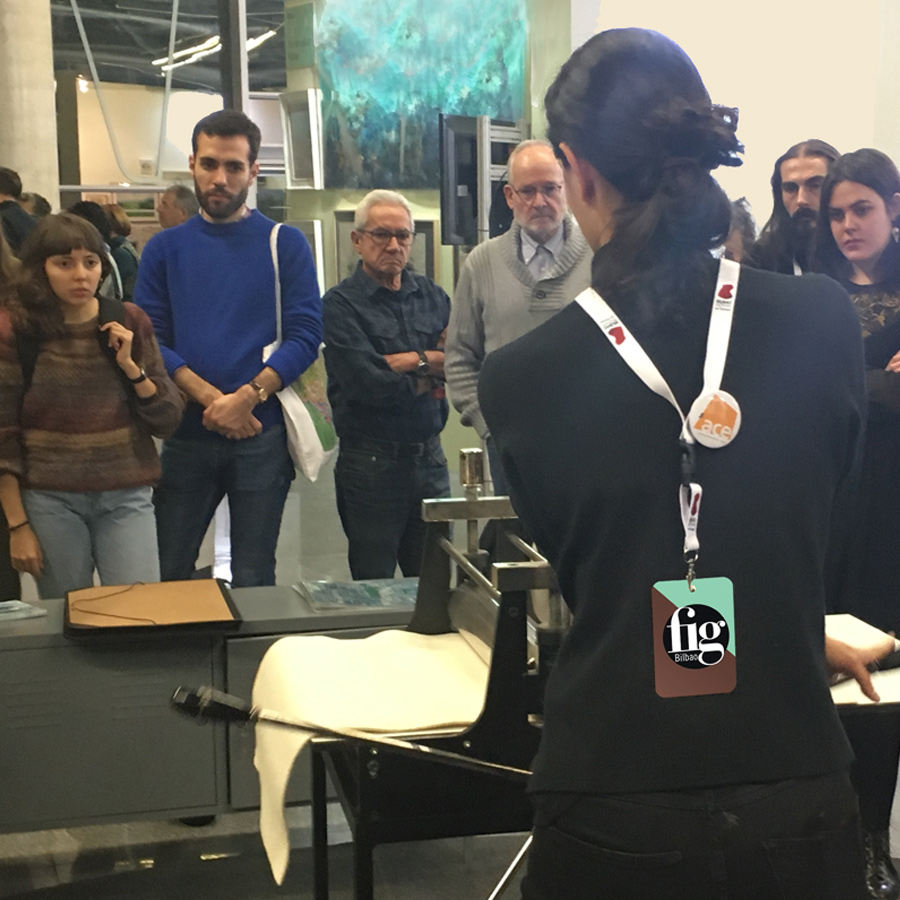Activities
Exhibitions, Fellowships
Probable spaces
Alicja Habisiak-Matczak
20.02.19 01.03.19
In February 2019, we had the pleasure to receive Alicja Habisiak-Matczak as a Visiting Artists and to exhibit a body of her graphic work at the Poliglota Room. As part of her visit, the artist delivered a lecture and participated of a full day of activities with Argentinean artists that was open to the local public and artistic community.
Probable spaces (by Alicja Habisiak-Matczak)
I create my own visions of space, a kind of architectonical caprices following the lesson of Piranesi and his “Carceri”. The sensation of movement and rhythm may bring to mind the paintings of the futurists, the juxtaposition of various vintage points in one image reflect the cubist way of thinking about the space.
My pieces are inspired by existing places, though they are always modified by my imagination, memories and my ”perception of perspective”—individual and intuitive. Under the influence of these transformations, I would like my graphic works to become more universal urban scenes, which every viewer can interpret in their own way. My enchantment by the urban environment connotes “Invisible Cities” by Italo Calvino with his visionary concepts, such as ”a hanging city” or “a city of light”.
These prints reveal my fascination with the nature of light and shade, which through changes of direction, intensity and character, create infinite, mysterious spaces. The urban architecture is often the scenery of their mutual interactions – it is often distorted and it sometimes brings to our mind the atmosphere of a dream, where repetition, exaggeration, connection of seemingly strange elements into new wholes is a natural way of perceiving the world. I try to show the monumental character of space, which is sometimes constructed or somewhere else deconstructed by shade and light.
Technically, I pay much attention to a search for different ways to obtain grainy textures—both in the technique of aquatint dusted by hand, in the technique of roulette or sand aquatint. Each of these techniques allow me to obtain a varied and rich structure built of points—white and black. In my recent research on iron plates in intaglio techniques, I use the ferrotint technique and etching on iron. Etching aluminum plates in copper sulphate is part of my latest experiments with non-toxic intaglio techniques.
Related artists
–––––
This activity has been possible thanks to the generous support of the Polish institutions listed below as well as the Fundación´ace para el Arte Contemporáneo












